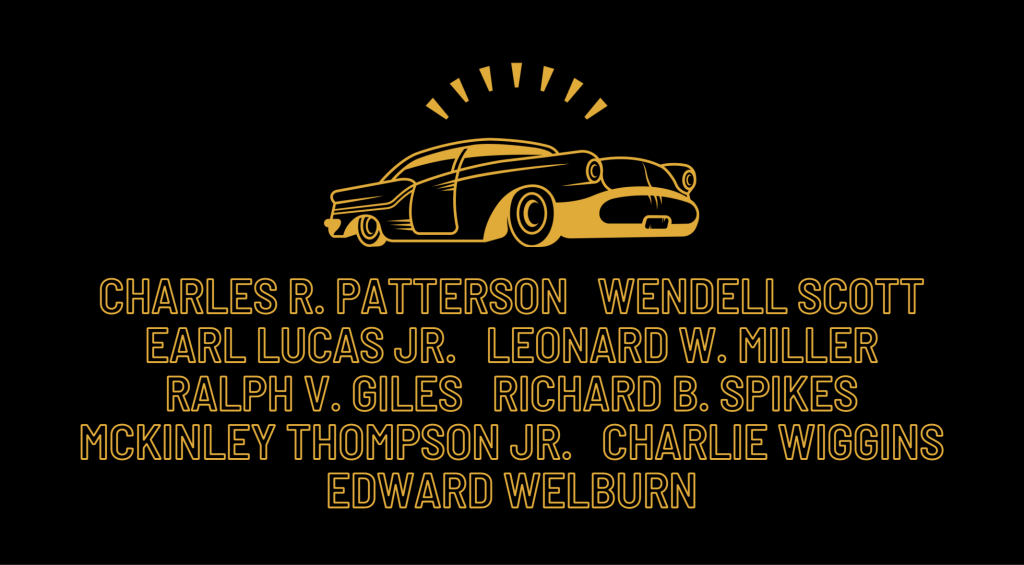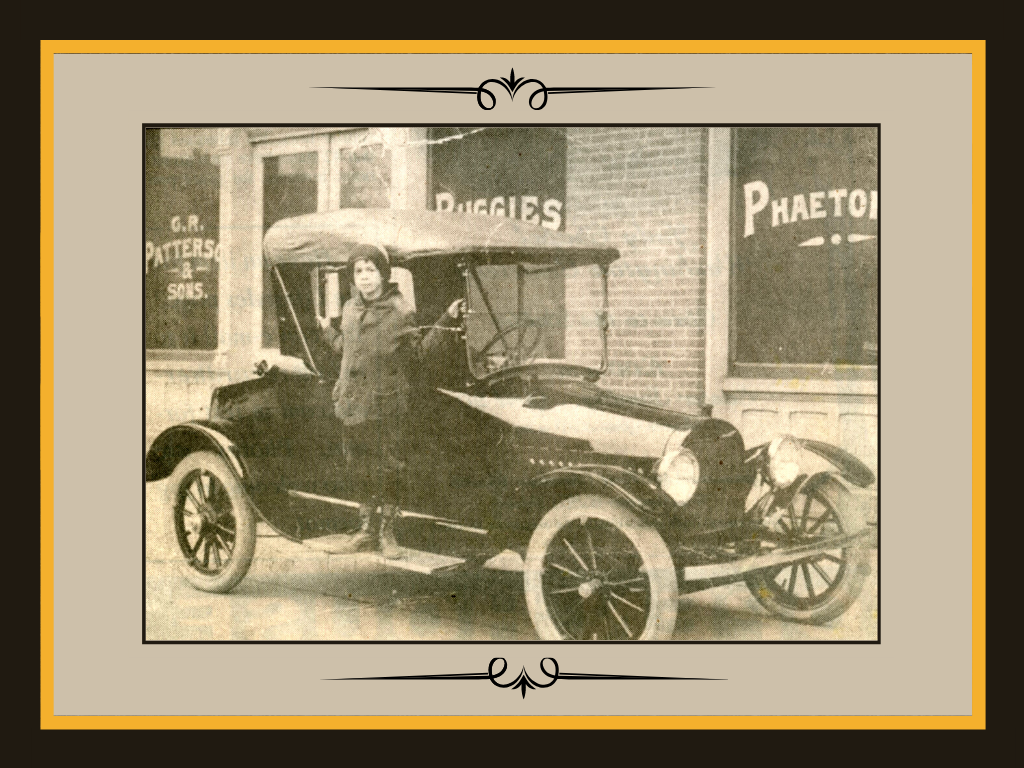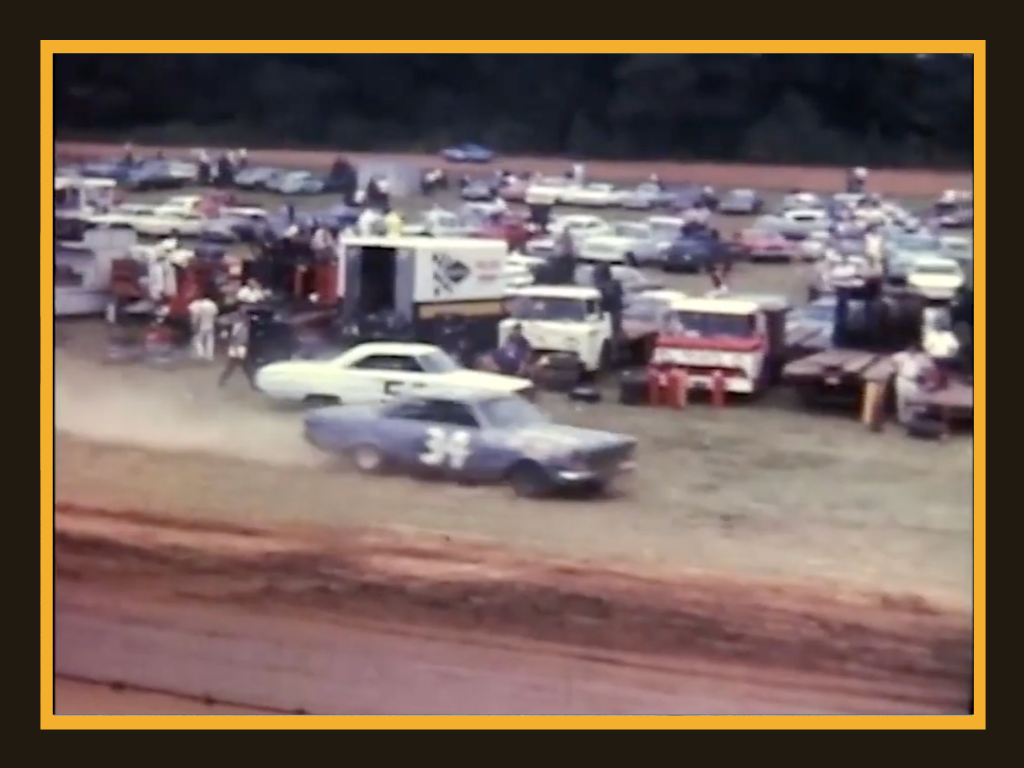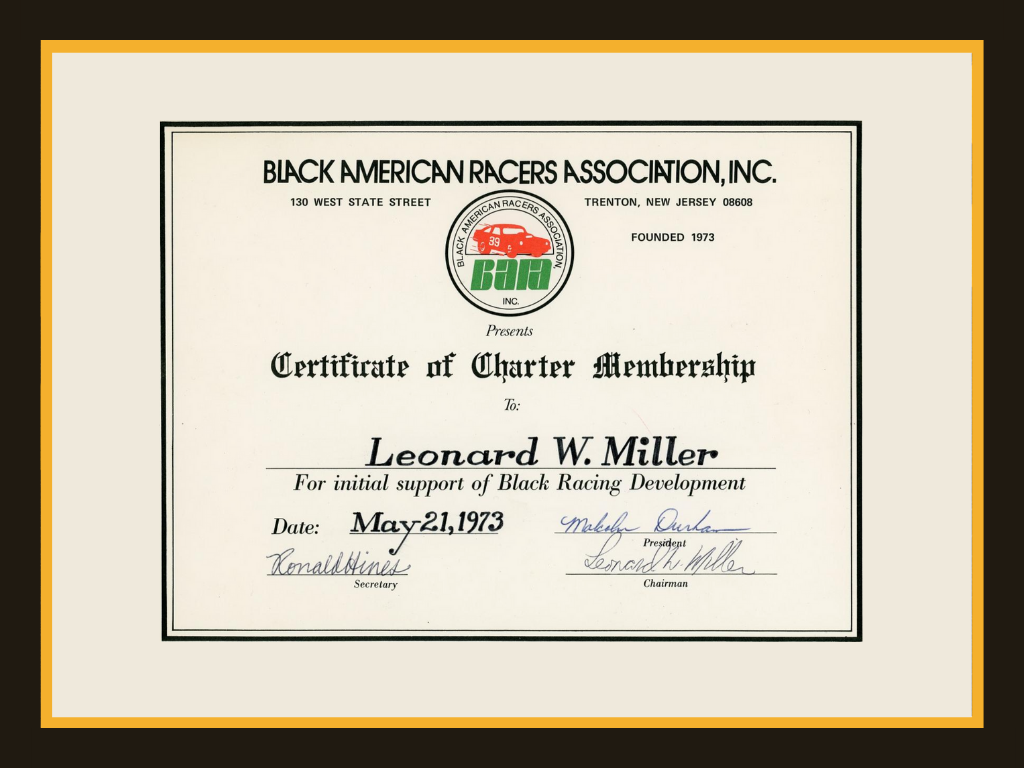It's Easier Here.
Leith Cars Blog
The number of significant contributions African Americans have made to American automotive history is immeasurable. However, much of that history has gone unrecognized, so in part one of our two-part blog, we’re putting the spotlight on several African American automotive innovators you should know from the first half of the 20th century. We’re concentrating here, on some of the unsung heroes who were pioneers in their respective fields, specifically, the manufacture of the automobile, the invention of new automotive technology, and trailblazing competition in motorsports.

A few of the names to know who played a role in American automotive history.
The first and only African American owned and operated automobile company
The turn of the last century saw the birth of a new form of personal transportation…the automobile, and with the new invention, a multitude of automobile manufacturers of various scale, sprung to life. One such newly christened car builder was C.R. Patterson & Sons of Greenfield, Ohio.
Beginning as a carriage maker by trade, Charles Richard Patterson (1833-1910), formed a business partnership in 1873 with a fellow horse carriage maker, J.P. Lowe. Patterson eventually became the sole owner of the company after Lowe’s passing several years later. The name of the carriage manufacturing business was changed to C.R. Patterson & Sons in 1893.
After Charles Patterson died in 1910, the business passed to his son Frederick, who had the foresight to see the coming importance of the horseless carriage. Patterson began offering repair and restoration services for automobiles and through that experience, took the next step in the company’s evolution in 1915 by announcing the availability of the Patterson-Greenfield automobile for the price of $685.
C.R. Patterson & Sons already had a reputation for building quality carriages, and once orders for the new Patterson-Greenfield automobile began coming-in, C.R. Patterson & Sons officially entered the ranks of American automobile manufacturers. Over the next few years, several custom hand-built models became available including a coupe, sedan, and a “Red Devil” speedster.
Competing with mass-produced automobiles built in Detroit however, was a much more daunting task than actually converting the business from buggies to motor-driven vehicles. Automobile production ceased for C.R. Patterson & Sons in 1918 when Frederick Patterson decided to concentrate once again on the repair side of the business. During the Nineteen-twenties, the company began manufacturing truck and bus bodies to be fitted on frames from outside manufacturers. Sadly, by 1939, 10 years into the Great Depression, C.R. Patterson & Sons closed its doors forever.

Photograph of Postell Patterson, son of F. D. Patterson, on the running board of a Patterson-Greenfield Roadster as introduced in 1915. The Patterson showroom is in the background. — Courtesy of the Historical Society of Greenfield, Ohio, www.greenfieldhistoricalsociety.org
The inventor of the automobile turn signal
As prolific an inventor as any during his day, Richard Bowie Spikes (1878 – 1963), was responsible for several patents and automotive safety systems we take for granted today. After Spikes settled with his wife and son in California in the early 1900s, his varied skills as a mechanic, a saloon keeper, and barber, would lead to the invention of several important patents throughout his life.
Spikes invented a beer-tapper, self-locking rack for billiard cues, a combination milk bottle opener, and cover, and a horizontal swinging barber’s chair, just to name a few of his non-automotive work.
What he was most interested in, however, was the automobile industry and transportation in general. Spikes patented a trolley pole arrestor, a brake testing machine, sampler, and temperature check for automotive liquids. He also developed an automatic brake safety system and worked to improve the gear shift for the automatic transmission in 1932. Spikes’ gear shifting device was designed to keep the gears for various speeds in constant mesh, a huge improvement for the times. His automatic brake safety system was also important as it provided a reserve braking action in case of damage to the normal braking system and is still used in some buses as a fail-safe means of stopping the vehicle.
If that bit of mechanical ingenuity weren’t enough, the next time you’re approaching an intersection, preparing to signal your turn, you can thank Richard Spikes, who, even though a patent has yet to be located, is widely credited with the invention of the automobile turn signal. In 1913, he installed his automobile signaling system on a Pierce-Arrow motorcar.
Early 20th-century racecar builder, mechanic, driver, and motorsports entrepreneur
Not one to be told, “you can’t race here,” Charlie Wiggins (1897 – 1979), an accomplished automotive mechanic, built his own racecar, made primarily of salvaged parts from local junkyards, and began to dominate the African American racing scene of the mid-nineteen-twenties in his race car named the “Wiggins Special.”
Wiggins, born in Baptisttown, a segregated neighborhood in Evansville, Indiana, attempted to enter his racecar in the 1924 Indianapolis 500 but was told he was “ineligible to compete” due to the Jim Crowe laws of the time.
Undeterred, Wiggins got together with other African American race car drivers and formed their own racing league called the Colored Speedway Association. The association’s championship race was christened the “Gold and Glory Sweepstakes”, a 100-mile race on the dirt track at the Indianapolis Fairgrounds. Wiggins won the Gold and Glory Sweepstakes three times but In 1936, he lost a leg and an eye after a 13-car crash, forcing him to retire from racing. Even more amazing, he made himself a wooden leg during his recovery from the crash and continued to build and repair cars for a living. Charlie Wiggins also continued to fight for African American participation in motorsports right up until his death in 1979 at the age of 82.
The first African American driver to compete full-time in and win at NASCAR’s highest level
Wendell Scott (1921 – 1990), from Danville, Virginia began his racing career on local dirt tracks before obtaining his NASCAR license in 1953. He debuted in the Grand National Series on March 4, 1961, in Spartanburg, South Carolina, and on December 1, 1963, Scott won a Grand National Series race at Speedway Park in Jacksonville, Florida, becoming the first African American driver to win a race at NASCAR’s premier level.
Unfortunately, due to the racial tensions of the times, Scott wasn’t declared the winner of the race at Jacksonville as the first-place trophy actually went to the second-place finisher, Buck Baker. After reviewing the laps of the race, it was determined that Wendell Scott’s number 34 Chevy finished the race in first-place, two-laps ahead of Baker’s car. NASCAR awarded Scott the win two years later, but his family never received the trophy he had earned until 47 years after the race and 20 years after Scott had died. A replica of the 1963 trophy was presented to Scott’s family in 2010 and allegedly, to this day, no one knows exactly what happened to the original trophy.
During his long NASCAR career, Scott achieved one win and 147 top-ten finishes in 495 Grand National starts, which is pretty incredible considering that he was a self-funded driver for the most part. Along with overcoming adversity at the track, Scott had to put his race earnings back into his own racecar and keep it mechanically ready in order to make the next race on the schedule. Included in his nearly 500 NASCAR GN starts is a top-10 finish in 1969 at the North Carolina State Fairgrounds Speedway in Raleigh and on September 20th, 1964, a top-5 finish at Occoneechee/Orange Speedway in Hillsborough. You can catch a glimpse of Scott’s blue number 34 Ford from archival race footage at Occoneechee featured in “Best Kept Secrets in the Triangle” by Our State Magazine and LeithCars.com.
For even more on Wendel Scott, go watch the movie “Greased Lightning,” a dramatization of his life story, portrayed by late actor-comedian Richard Pryor in 1977.
Wendell Scott was posthumously inducted into the NASCAR Hall of Fame in Charlotte, North Carolina in 2015.

Wendell Scott (#34 Ford), exits pit road at Occoneechee/Orange Speedway in a 1964 race at Hillsborough, N.C. — Photo from original film footage provided by Our State Magazine.
Motorsports team owner and founder of the Black American Racers Association
Philly-raised with hot rod racing in his blood, Leonard W. Miller (1934 – ), turned his mechanical knowledge of building custom cars in his youth into a position with the United States Third Army’s 45th Ordnance Battalion, Direct Automotive Support Company in 1957. This was a unique military company where soldiers were trained to repair jeeps and trucks under battlefield conditions. The company was built around hot-rodders like Miller, along with drag racers, assembly linemen from the United Auto Workers, and NASCAR drivers.
In 1972, Miller helped found Vanguard Racing which became the first African American-owned team to enter the Indianapolis 500. He leveraged this experience, along with friendships with NASCAR driver Wendell Scott and other African American racers into the formation of the Black American Racers Association that same year. BARA was formed to give recognition to African American racing drivers, crews, mechanics, car owners, and other members of the auto racing community and corporations that help promote African American racing development. At the group’s peak, it claimed a membership of 5,000 over twenty states. Wendell Scott became BARA’s first honorary chairman and in 1976, Miller was inducted into the Black Athletes Hall of Fame.
Leonard Miller remained active in motorsports beyond the nineteen-seventies including the eventual end of BARA in 1978. He formed Miller Racing Group years later with his son, Leonard T. Miller, and together, they became the first African American team owners to win a track championship in NASCAR history, taking home the title in 2005 at Old Dominion Speedway in Manassas, Virginia.
Miller authored “Silent Thunder: Breaking Through Cultural, Racial, and Class Barriers in Motorsports” in 2004, a book that chronicles his life in auto racing.

Certificate of Charter in the Black American Racers Association (BARA), circa 1973.
As you’ve seen here, there are numerous accomplishments, industry firsts, and innovations made by African American entrepreneurs, engineers, inventors, and motorsports pioneers during the history of the automobile, so we encourage you to do your own research and see who you might discover too. As you delve more into this fascinating part of American automotive and African American history, feel free to send us a note if you’d like to contribute to this story.
Part two of our blog focuses on several automotive influencers in the design of the automobile over the last half of the 20th century to today. You may read part two, here.
Written by Mark Arsen for LeithCars.com.
More from my site








